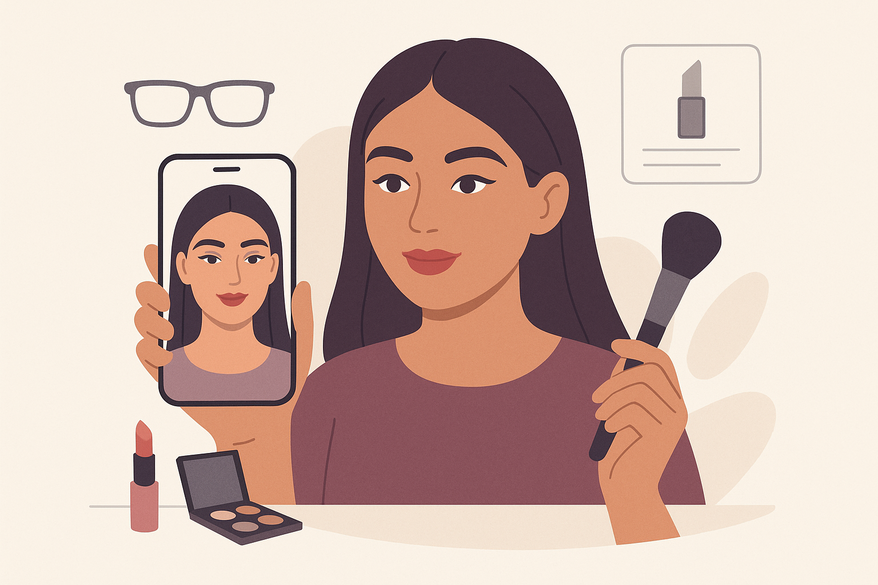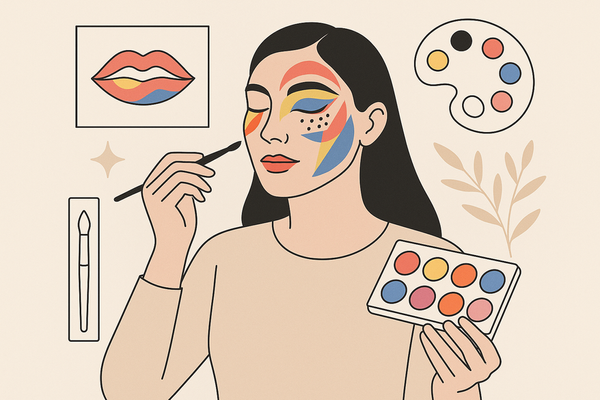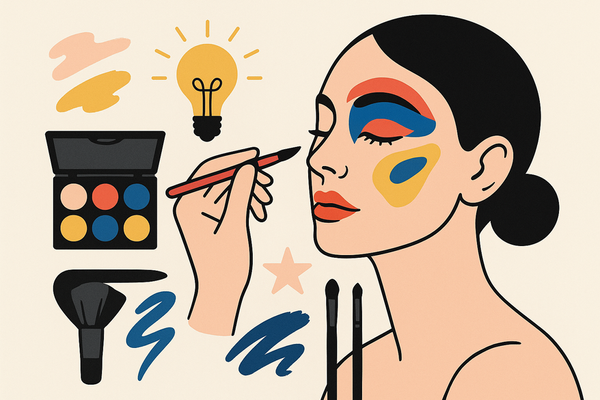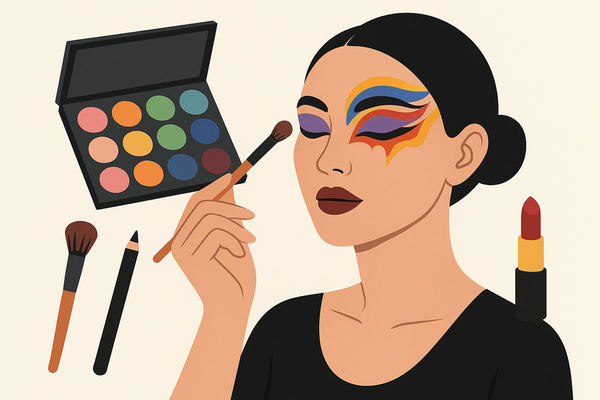Augmented Reality Makeup Tutorial: Your Complete Guide to Virtual Try-Ons
Explore the world of augmented reality makeup tutorials for a hands-on, hygienic experience. Learn how AR beats traditional methods and discover top apps.

Estimated reading time: 8 minutes
Key Takeaways
- AR makeup tutorials overlay digital cosmetics onto live camera feeds for interactive, hygienic try-ons.
- Advanced computer vision and facial tracking deliver realistic, personalized virtual makeup applications.
- Step-by-step AR platforms streamline learning, save time and cost, and reduce product waste.
- Numerous apps and devices support AR beauty, with future trends pointing to AI forecasting and metaverse salons.
Table of Contents
- Section 1: What Is an Augmented Reality Makeup Tutorial?
- Section 2: Technological Background—AR vs. Traditional Tutorials
- Section 3: Step-by-Step Process of an Augmented Reality Makeup Tutorial
- Section 4: Key Benefits of Augmented Reality Makeup Tutorial
- Section 5: Tools & Platforms for Augmented Reality Makeup Tutorial
- Section 6: Augmented Reality Makeup Tutorial vs. Conventional Makeup Tutorials
- Section 7: Best Practices & User Tips
- Section 8: Future Trends
- Conclusion & Additional Resources
Section 1: What Is an Augmented Reality Makeup Tutorial?
An augmented reality makeup tutorial projects virtual foundation, eyeshadow, lipstick, and blush directly onto your live camera feed, guiding you through each brushstroke in real time.

"Makeup Check AI makes it even easier to generate event-ready looks with AI-driven, real-time face tracking and shade matching."
Try Makeup Check AI to instantly create, preview, and adjust virtual makeup styles.
- AR in Cosmetics: Overlays digital colors, textures and 3D animations onto your camera feed for true-to-life finishes.
- Facial Tracking Technology: Maps over 100 landmarks—eyes, nose, lips, brows—and adapts to movement and lighting.
- Interactive Learning: Step-by-step on-screen prompts let you practice on your own face rather than watching someone else.
Section 2: Technological Background—AR vs. Traditional Tutorials
AR makeup relies on real-time computer vision and facial tracking, while classic tutorials are static and generic.
- Computer Vision & Facial Tracking: Rapid landmark detection, 3D mesh generation, GPU-accelerated rendering, and light calibration ensure accuracy.
- Traditional Video or Photo Tutorials: Show techniques on a model, require imagination to replicate, and lack personalization.
- AR vs. One-Size-Fits-All: AR adapts to your unique features and provides dynamic overlays; video tutorials do not.
Section 3: Step-by-Step Process of an Augmented Reality Makeup Tutorial
- Accessing the AR Platform
- Download popular apps: L’Oréal Virtual Try-On, Sephora Virtual Artist, YouCam Makeup, WOW HOW App, Banuba SDK.
- Sign in or create a profile to save your face scan and preferences.
- For more insights, read Virtual Makeup Try-On: Revolutionizing Beauty with AR and AI.
- Facial Scanning
The app builds a 3D mesh of your face to track expressions and adjust overlays seamlessly.
- Selecting a Tutorial or Look
Choose from curated styles or brand-specific guides tailored to your preferences.
- Interactive Application
Follow on-screen prompts for each step—apply, blend, and layer products with real-time feedback.
- Personalization
- AI suggests products based on skin type and tone.
- Analyzes face shape to recommend contour angles and arch styles.
- Customize depth, hue, opacity, and layer order.
- Learn advanced routines in our AI Makeup App guide.
- Experiment and Adjust
Fine-tune intensity, switch products, and compare multiple looks side by side.
Section 4: Key Benefits of Augmented Reality Makeup Tutorial
Virtual Try-Ons
Hygienic, no-mess experimentation with dozens of brands—no physical samples required.
Personalized Guidance
Adaptive overlays align with your facial geometry; AI tips ensure perfect application.
Time & Cost Savings
Preview looks before purchase; skip removal, reapplication, and impulse returns.
Enhanced Confidence & Creativity
Safe space to try bold styles with real-time digital support.
Section 5: Tools & Platforms for Augmented Reality Makeup Tutorial
- Popular Apps: L’Oréal Virtual Try-On, Sephora Virtual Artist, YouCam Makeup, WOW HOW App, Banuba SDK.
- Devices: Smartphones/tablets with high-res cameras, in-store AR mirrors, emerging AR glasses.
- Software Platforms: Brand-owned apps, third-party AR SDKs with AI personalization, cloud or on-device rendering.
Section 6: Augmented Reality Makeup Tutorial vs. Conventional Makeup Tutorials
- Interactivity: Real-time tracking vs. passive viewing.
- Personalization: Tailored to you vs. generic model.
- Ease of Correction: Instant reset vs. manual removal.
- Limitations: Device quality and lighting dependence vs. fixed content.
Section 7: Best Practices & User Tips
- Use even, natural lighting for true-to-life colors.
- Clean your camera lens regularly.
- Save multiple “looks” to compare side by side.
- Provide accurate skin data for better AI suggestions.
- Experiment with angles to fine-tune application cues.
Section 8: Future Trends
- AI-driven hyper-realism and predictive look forecasting.
- Micro-expression mapping for advanced contouring.
- Social commerce integration: shoppable live streams.
- AR wearables and metaverse beauty salons.
Conclusion & Additional Resources
Augmented reality makeup tutorials are redefining beauty education by combining real-time tracking, interactive overlays, and AI personalization. From hygienic try-ons to cost savings and limitless creativity, AR delivers a next-generation beauty experience. Download an app or visit an AR-enabled site today to explore looks tailored just for you.
Additional Resources:
FAQ
- What devices support AR makeup tutorials?
- Most modern smartphones and tablets with high-resolution cameras, plus in-store AR mirrors and emerging AR glasses, support these experiences.
- How accurate are virtual try-ons?
- Accuracy depends on facial tracking quality, lighting conditions, and app algorithms—advanced platforms calibrate to your environment for realism.
- Is my facial data secure?
- Reputable apps use encrypted storage and offer privacy settings—always review the privacy policy before saving scans.
- How can I improve AR makeup results?
- Use even lighting, clean your lens, update the app, and provide accurate skin-tone information for the best color match.




